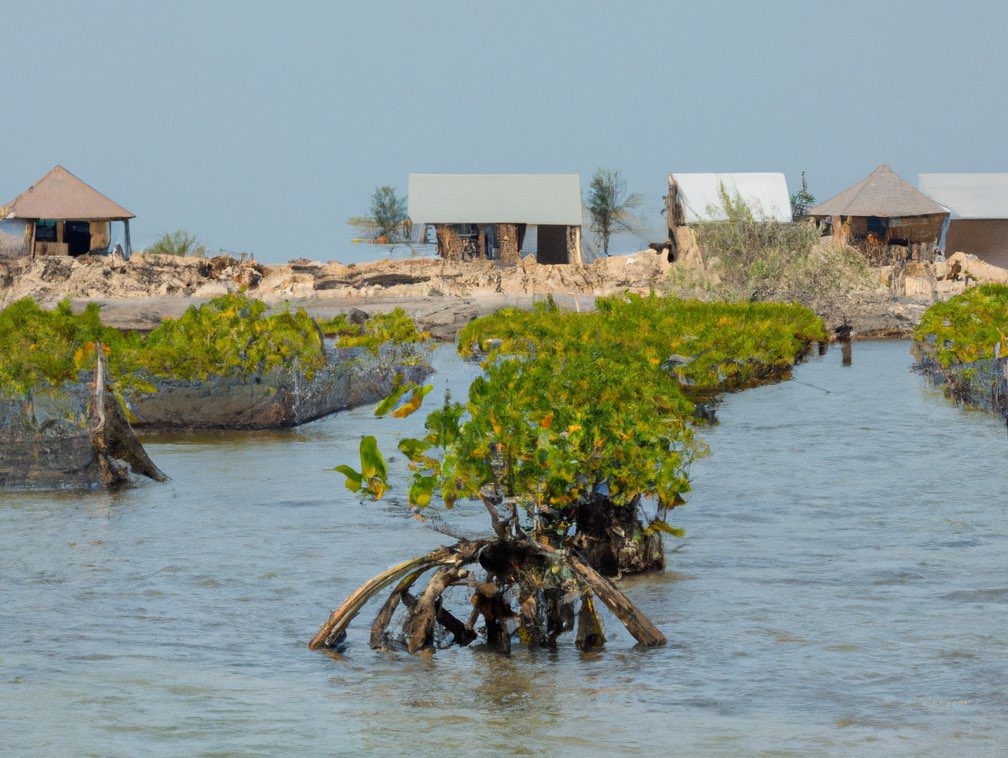Climate change is one of the biggest challenges facing our planet today. The rise in global temperatures is causing severe impacts on our oceans, including the loss of biodiversity and rising sea levels. But did you know that our oceans also hold the key to solving this crisis? This key is called blue carbon.
Blue carbon refers to the carbon stored in the oceans by coastal ecosystems like seagrasses, mangroves, and salt marshes. These ecosystems act as carbon sinks, absorbing and storing large amounts of carbon from the atmosphere. In fact, these coastal ecosystems store more carbon per unit area than any terrestrial ecosystem, including forests.
Unfortunately, blue carbon ecosystems are under threat from human activities such as coastal development, pollution, and overfishing. These activities not only destroy these ecosystems, but they also release the carbon stored in them back into the atmosphere, contributing to global warming.
Protecting and conserving blue carbon ecosystems is therefore crucial in the fight against climate change. By doing so, we can keep the carbon stored in these ecosystems, prevent its release into the atmosphere, and help to reduce global CO2 levels.
Moreover, blue carbon conservation also provides numerous other benefits. These ecosystems serve as vital habitats for many species of fish, birds, and other wildlife. They also protect coastal communities from storms and sea level rise, and provide important livelihoods for millions of people.
For marine ecosystems blue carbon is a critical component in the fight against climate change. By protecting and conserving coastal ecosystems, we can help to reduce CO2 levels, protect biodiversity, and secure a better future for ourselves and our planet. It’s time for us to take action and ensure that these vital ecosystems are protected for generations to come.

Ocean acidification and co2 emissions
Ocean acidification is another major challenge facing our oceans today. As CO2 levels in the atmosphere increase, more CO2 is dissolved in the ocean, leading to a decrease in ocean pH levels. This shift in pH makes it more difficult for marine organisms like coral and shellfish to build their skeletons and shells, leading to declines in population and even extinction in some cases.
The link between CO2 emissions and ocean acidification highlights the importance of addressing both climate change and ocean acidification together.
By reducing our CO2 emissions, we can help to slow the rate of ocean acidification, preserving the health of our oceans and the many species that call them home. Additionally, by protecting and conserving blue carbon ecosystems, we can help to mitigate the effects of climate change and ocean acidification, ensuring a brighter future for our oceans and our planet.
Blue carbon projects can help to address ocean acidification in several ways:
- Carbon sequestration: By protecting and conserving blue carbon ecosystems, we can help to keep the carbon stored in these ecosystems, preventing its release into the atmosphere and contributing to ocean acidification.
- CO2 reduction: Blue carbon projects can help to reduce global CO2 levels, which in turn helps to slow the rate of ocean acidification
- Habitat protection: Blue carbon ecosystems provide important habitats for many species of marine life that are vulnerable to ocean acidification. By protecting these ecosystems, we can help to protect these species and maintain the health of our oceans
- Coastal protection: Blue carbon ecosystems like mangroves and salt marshes can also provide important protection for coastal communities against storm surges and sea level rise, which are becoming more frequent and intense as a result of climate change.
Blue carbon projects play an important role in addressing ocean acidification. By reducing CO2 levels, protecting habitats, and providing coastal protection, blue carbon projects can help to ensure a healthy future for our oceans and the many species that call them home.




